ESCAPE
Graaff-Reinet III: The English Angel, the unstoppable pilot, the restorers and the shearers
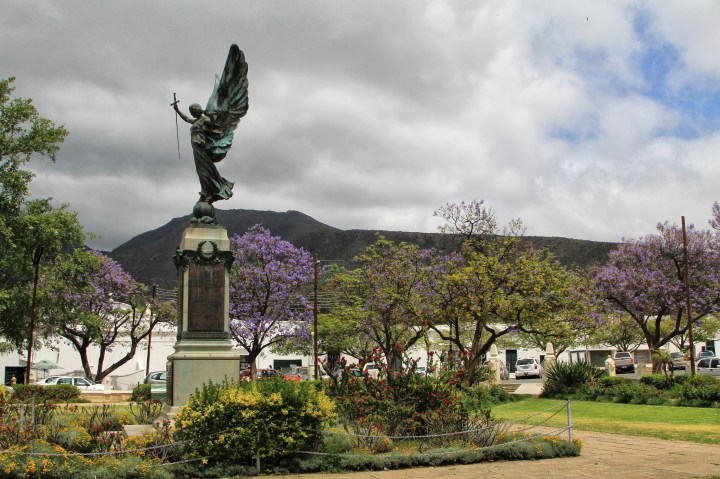
Graaff-Reinet, the Gem of the Karoo, is a treasure trove of fascinating tales, replete with interesting characters and champion sheep shearers, a place where at dusk every night the Heartland Hour ushers in a unique beauty.
The Boer-Brit divide in the Graaff-Reinet district lasted for decades after the Anglo-Boer (South African) War. Local history buff Andrew McNaughton knows the story of the time a little Boer farm girl came to town with her mother and, in passing the imposing statue on the town square (dedicated to locals who had fallen in World War 1), exclaimed: “Look at the angel!”
To which her mother replied sternly: “Don’t look. It’s an English angel.”
Andrew’s son David explains that the much-contested marble statue of General Christiaan de Wet (accompanied by Commandant Gideon Scheepers) at the corner of Somerset and Donkin Streets was a point of potential conflict as late as 1947, when the British royals came to visit.
The story goes that various Afrikaans burghers gathered around the statue with rotten tomatoes, ready to pelt King George if he did not doff his hat.
“But ever the gracious one, His Majesty complied and no tomato was hurled in anger that day,” David said.
These days, a long-standing and amicable truce between English- and Afrikaans-speaking Graaff-Reinetters has replaced the post-war bitterness of a century ago.
Up where he belongs
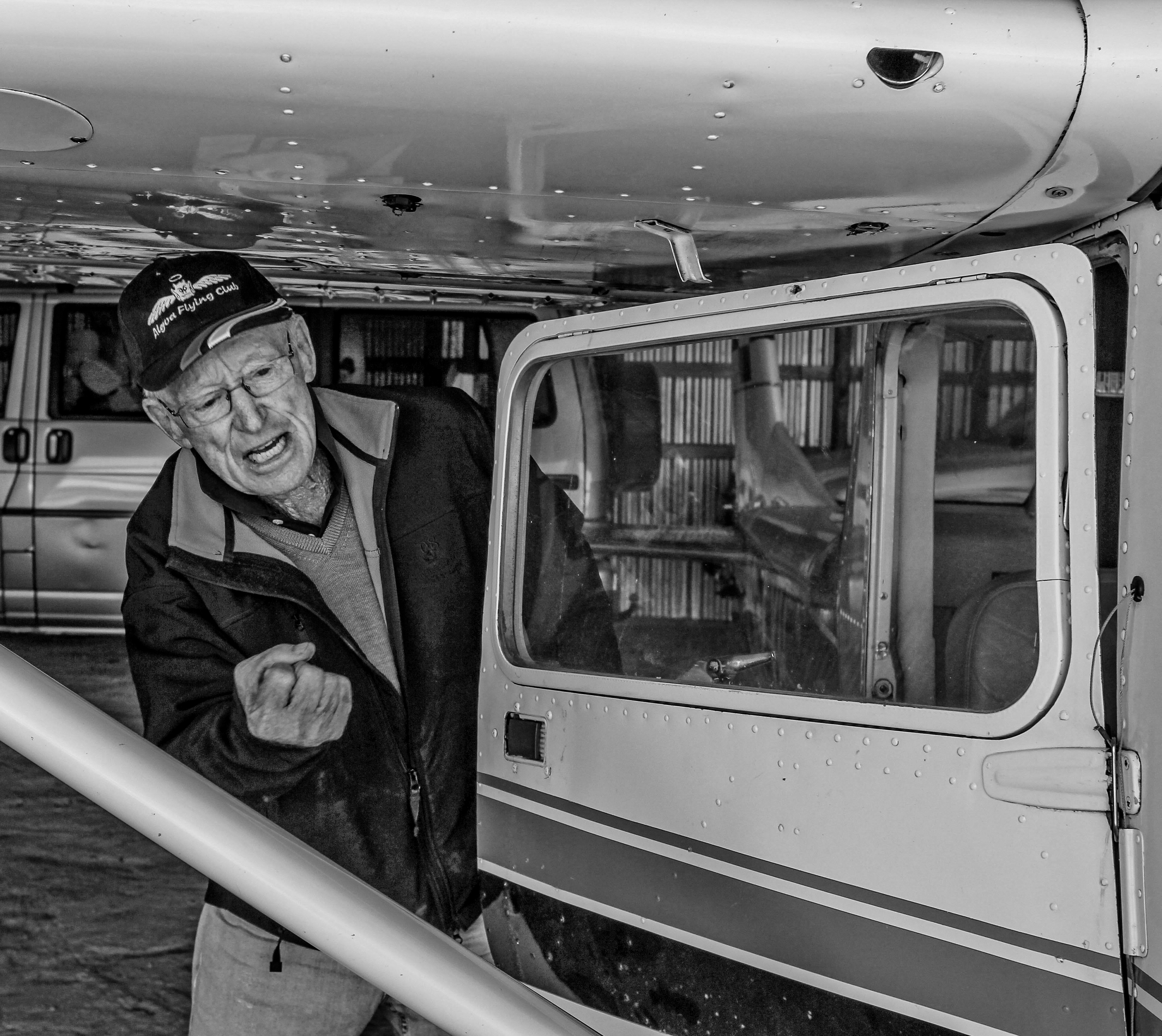
Charles Maasdorp, who flew well into his 80s. (Photo: Chris Marais)
Graaff-Reinet has a living legend called Charles Maasdorp who, even in his 80s, used to pilot his Cessna 150 Aerobat over the Karoo Heartland. In fact, Maasdorp was in the habit of delivering a Sunday paper to his daughter Marion at Wellwood Farm deep in the Sneeuberg mountains — by air.
As a youngster, Maasdorp’s dream was to fly.
“What do you want to be when you’re big?” his father, a successful Wool Boom farmer, asked him one day.
“A pilot.”
“No way. Pilots are the laziest people on Earth.”
Maasdorp went away, thought about this and returned 30 minutes later.
“Dad, you know what? I want to become a teacher.”
“No way. Teachers are the second-laziest people on earth.”
Eventually, Maasdorp returned.
“Okay, so if I can’t become a pilot or a teacher, maybe I should be a farmer.”
This seemed to have ticked the right box for his dad.
“Yes, that’s a fine decision. Farmers are really good people,” he said. And yet somehow, Charles Maasdorp went on to farm and fly with equal degrees of success.
Just ask Eira
What sets Graaff-Reinet apart is the sheer number of buildings that are national monuments (more than 220) and the fact that entire streetscapes have been preserved.
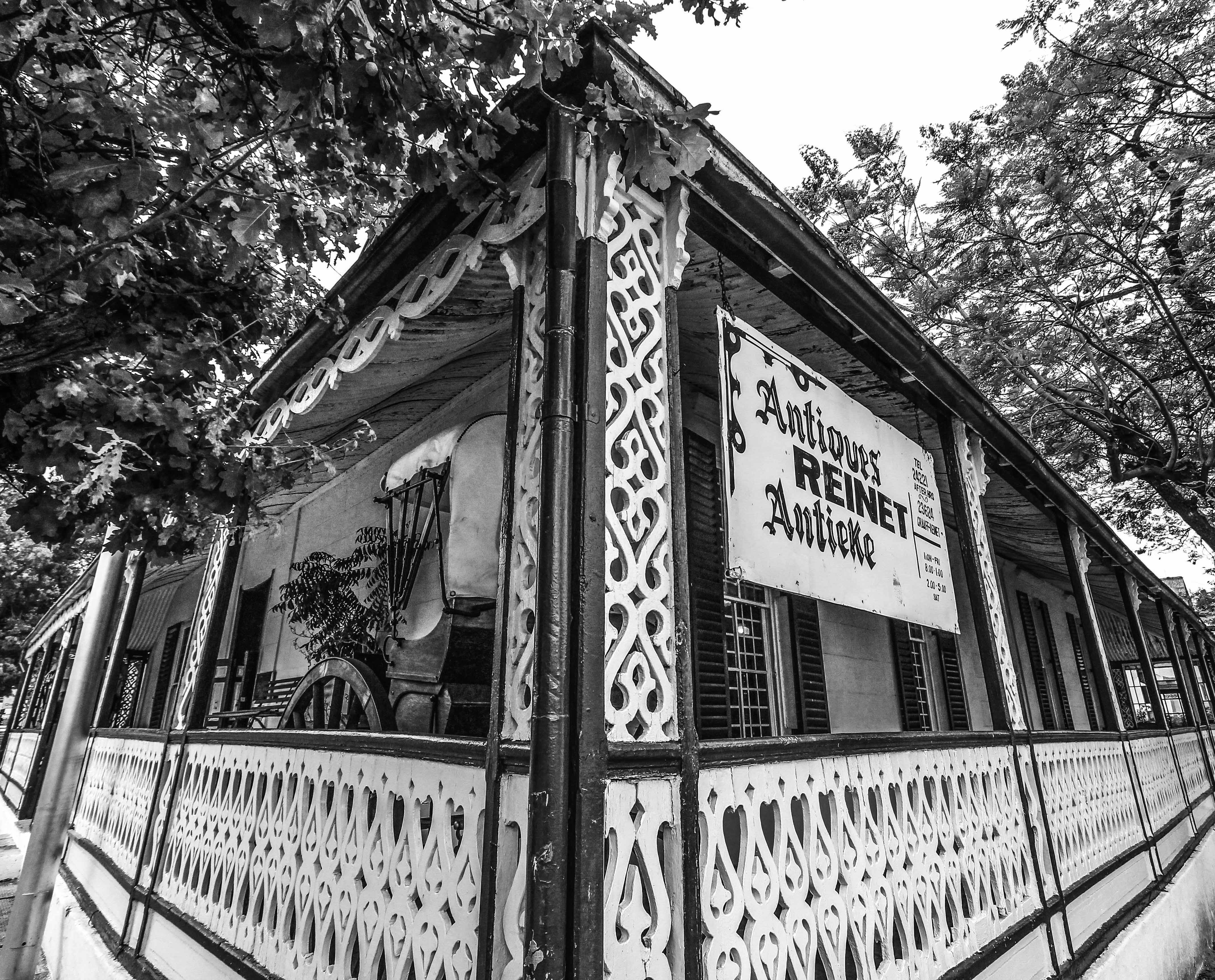
Reinet Antiques, the HQ of master-restorer Eira Maasdorp. (Photo: Chris Marais)
One of the restoration heroes is Eira Maasdorp, who started Reinet Antiques alongside the main road of Graaff-Reinet.
“After the Karoo Wool Boom in the 1950s, there was suddenly a lot of money available to sheep farmers,” she says. “They built new houses and filled them with modern furniture.”
And that’s how Eira Maasdorp began collecting stock for her shop. Then she noticed that some of the townsfolk were knocking down the priceless homes of Graaff-Reinet.
“We fought for every house, and made ourselves very unpopular. But I get such satisfaction from the fact that Graaff-Reinet is one of the few towns in South Africa to have kept its architectural heritage mostly intact.”
Read more in Daily Maverick: Preserve and restore an old Karoo house
Master shearers
Watching the men at work in a wool shed on a Karoo farm, clicking away with their shearing blades, is just as magical as seeing a blacksmith busy at his forge.
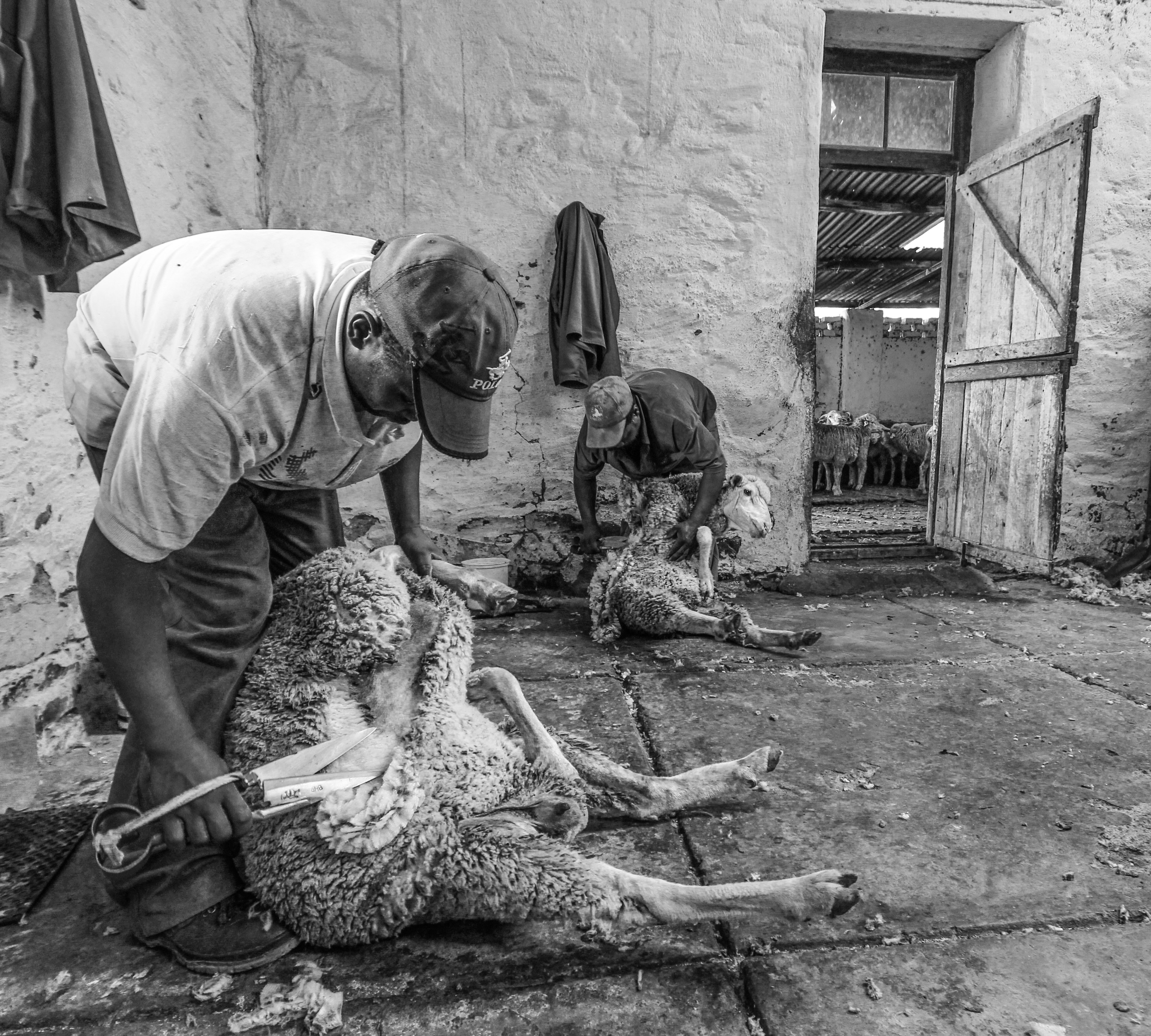
Time to shear — an aura of utter concentration in a Karoo shed. (Photo: Chris Marais)
There is something quite mesmerising about the artisanal action and the atmosphere in the shed at shearing time. Much of South Africa’s wool clip is still removed by hand shears, while in other places around the world, the fleecing is done with electrical clippers. We’ve had world-champion hand shearers capable of completing 150 sheep clips in a day.
The shearers originate mainly from the Karoo, the Eastern Cape and Lesotho, and have won prestige in their craft at world championships in far-off places like Scotland, New Zealand, Australia and Ireland. They work in long-established teams, are hired through a local farmers’ co-op and, because there’s no hi-tech or electricity involved, they are very mobile. A shearer travels with just two blades and his personal gear. Some permanent farmhands are equally adept at shearing.
If you visit an Eastern Cape Karoo farm, one of the first questions you should ask your host is: “Are you busy shearing right now?”
The Heartland Hour
Two hundred years ago, Andries Pretorius owned Letskraal outside Graaff-Reinet, and by all accounts he and his family were very happy there. Then he was prevailed upon to go trekking north and the rest is history. What he left behind was a fabulous old farm.
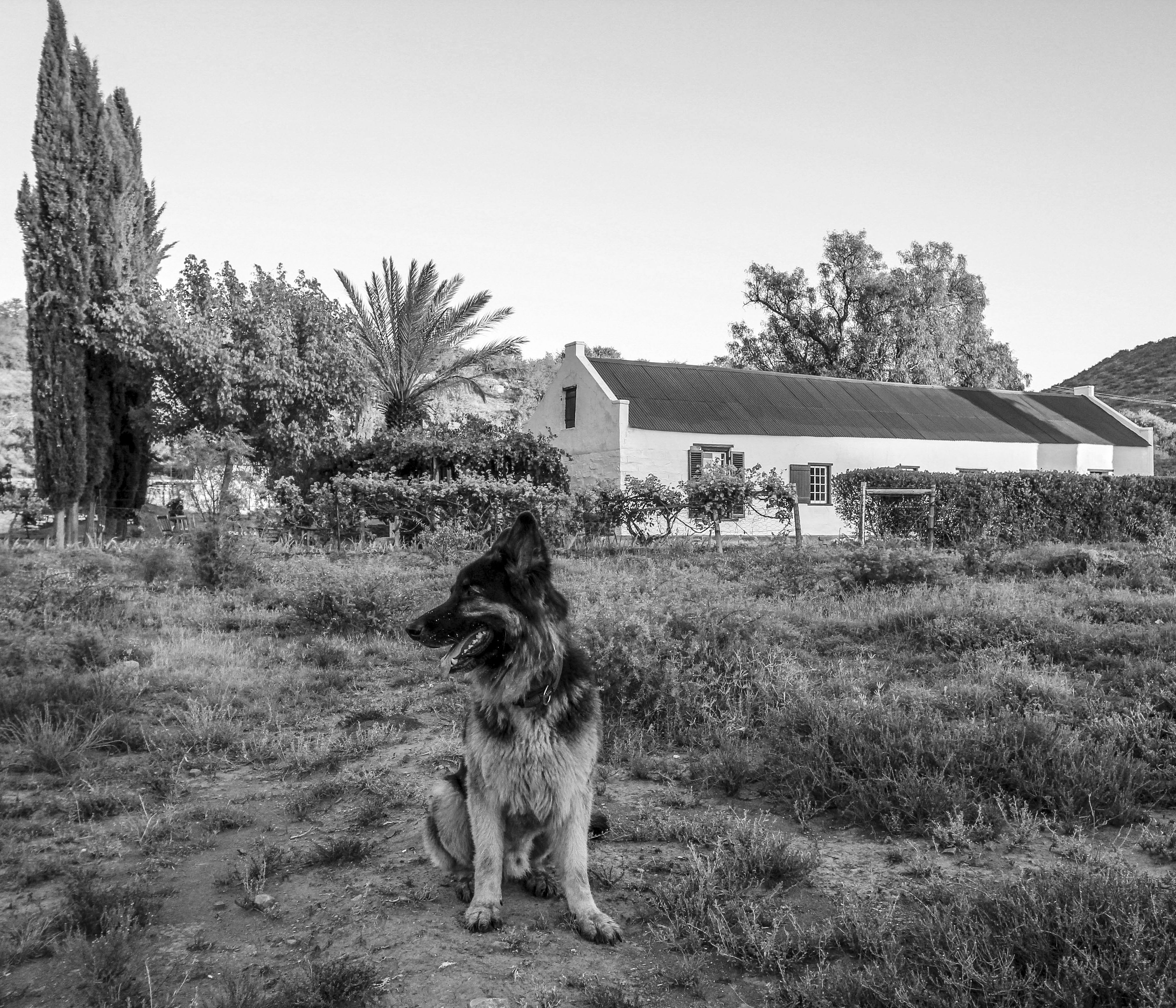
Letskraal historic farm — beautifully restored by local optometrist Johan Minnaar. (Image: Chris Marais)
Over time, it went to ruin and was eventually bought by the Minnaar family. Former owner Johan Minnaar made it his mission to restore Letskraal once he realised that the original building materials — mud, straw and water — were all around him.
Minnaar even used hand-made plastering tools to ensure there were no modern sharp edges to the walls. Letskraal, today owned by Peter and Chantel Annear, is a model of careful and correct restoration, and a popular pet-friendly farmstay. And as befits such a place, there is no electricity. It is also one of the most beautiful Karoo farmsteads.
Read in Daily Maverick: The very social Karoo Heartland town of storytellers and stoep-tasters
In the afternoon, everyone is inevitably attracted to the comfortable chairs near the grapevine pergola, as the pure windpump-drawn groundwater splashes into the dam.
The sun dances through a line of cypress trees, creating broad stripes of dense shade. Beyond are the proud peaks of the Agter Sneeuberg. Then comes that priceless time of dusk when the candles and the paraffin lamps are lit, the stars sequin the sky and the veld begins to purr with cricket song. It’s the Heartland Hour. DM
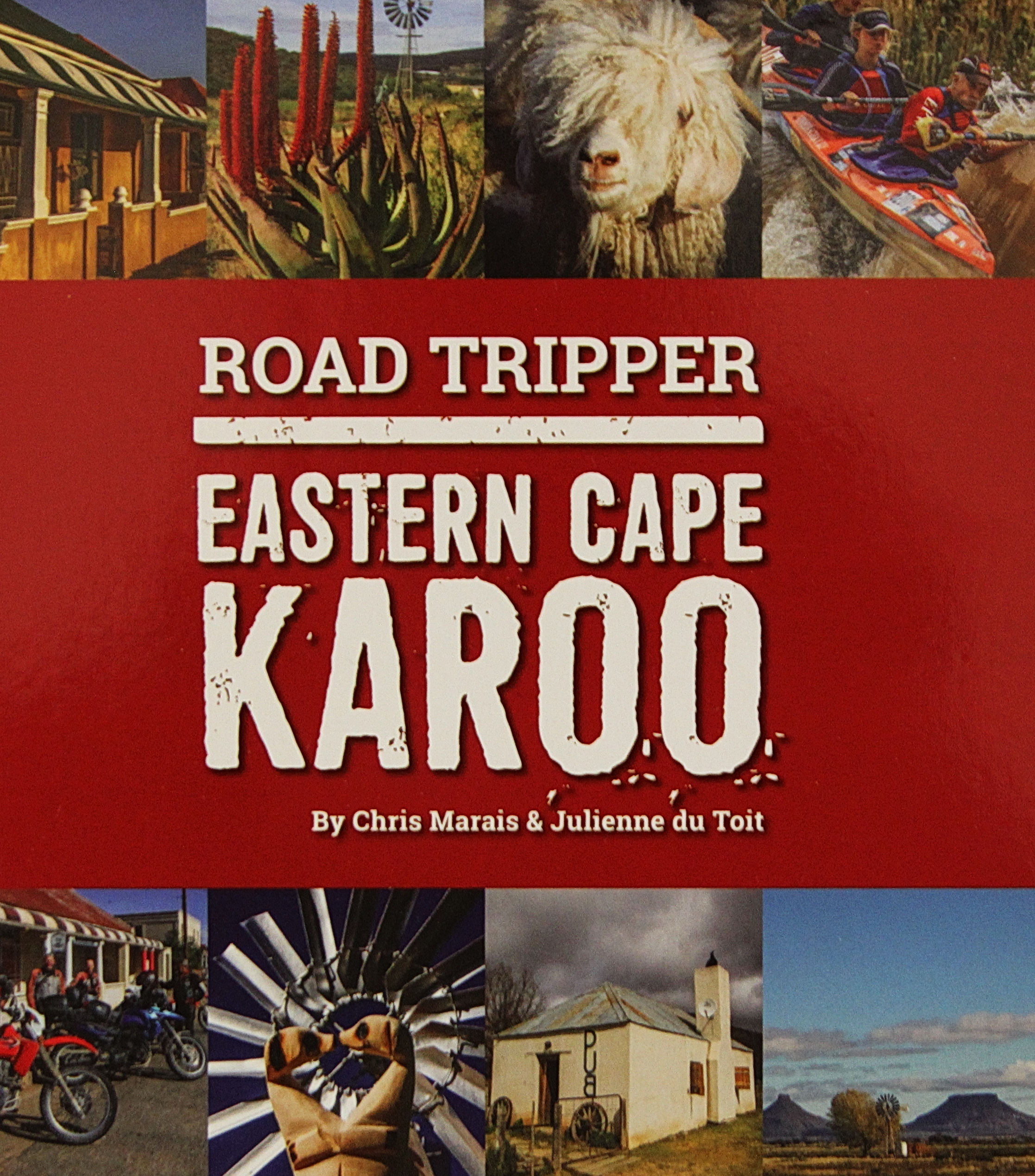
‘Road Tripper: Eastern Cape Karoo’ by Chris Marais and Julienne du Toit
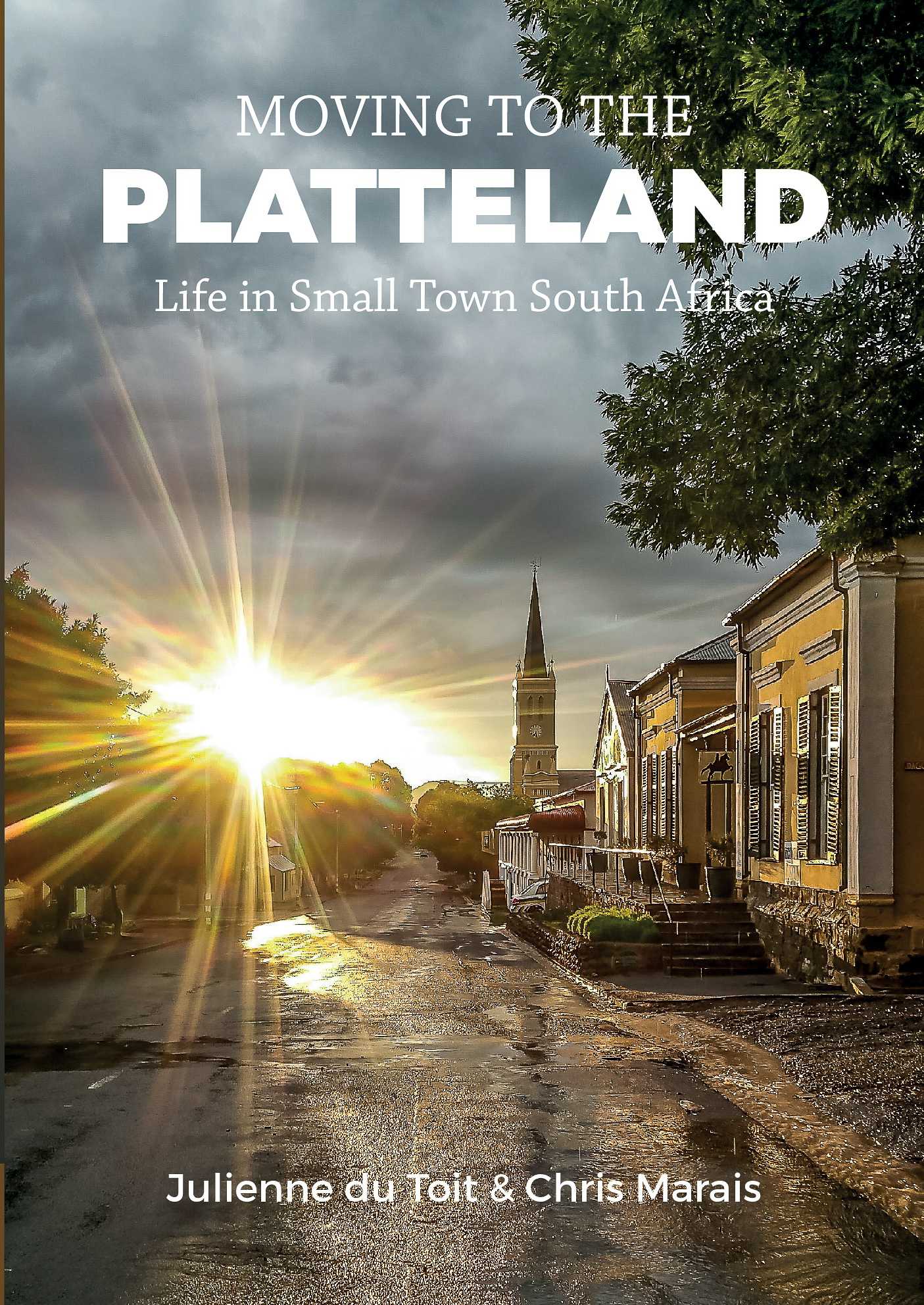
‘Moving to the Platteland: Life in Small Town South Africa’ by Chris Marais and Julienne du Toit
This is an excerpt from Road Tripper: Eastern Cape Karoo by Chris Marais and Julienne du Toit. The authors are offering a two-book special of Moving to the Platteland: Life in Small Town South Africa and Road Tripper: Eastern Cape Karoo at only R520, including courier costs in South Africa. Contact Julie@karoospace.co.za.
















 Become an Insider
Become an Insider
Comments - Please login in order to comment.